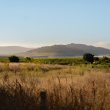Winnebago system reengineers government
Three years ago, to keep pace with increasing growth and development, Winnebago, Minn., decided to install a new digital land information system and convinced six nearby cities and towns to pool their information and financial resources for the project
Now, departments within the participating governments are capturing, storing, retrieving and sharing land information more efficiently than ever before. And the system is expected to pay for itself in seven years.
“The payback comes by eliminating duplication of services,” says David Schmidt, Winnebago’s director of planning and zoning. “To get a building permit, a person used to file forms at three different departments, which took the time of three clerks. Now the permit is filed once, and [the GIS] distributes copies to all the relevant departments automatically.”
A strong network is crucial for providing data access to offices spread across a 578-square-mile area. Because the distances exceeded standard Ethernet capability, the county established a fiber optic local area network for data exchange among workstations at the various offices.
Winnebago built the database on GenaMap by Genasys II, Fort Collins, Colo. The software runs identically at each city and county office regardless of computer platform.
The GIS was designed to give all participants access to a core database containing 20 information layers, such as transportation networks, water pipelines, sewer mains and parcel data. Individual departments add information and share it with departments elsewhere. For instance, the county planning and zoning department shares building permit information with the Register of Deeds and Tax Lister offices.
Data stored on the system can only be altered by the department that filed it. In some situations, such as with criminal files at the police department, sensitive data is loaded onto the server with access denied to other departments.
The Winnebago GIS contains 65 layers representing the infrastructure and demographics of 21 municipatities and more than 85,000 land parcels. To ensure that all participants’ interests are met, a Land Records Council was formed to oversee GIS development.
The GIS’s tool kit was used to build custom graphical user interfaces (GUI) for each participating department. The GUI creates a “point and click” environment that allows users with little or no GIS experience to access and view data.
Specialized applications were created with the GUI for individual departments. For instance, a custom GUI was built for the zoning department to track new building permit applications, report documentation to the tax assessor’s office and dispatch inspectors at appropriate times during the construction process.
Gary Kaiser, a traffic engineer with the city Of Neenah, believes that the public will soon be retrieving information from terminals in the Register of Deeds office. “They will be able to see a graphic with their lot or building on a parcel and all of the parcel information related to it,” he says.
In addition to the customized GUI and predicted seven-year payback, what truly impresses Schmidt about Winnebago’s cooperative GIS is that it has met the needs of the government departments and those of the public without requiring new employees. “This technology allows government to be re-engineered,” says Schmidt. “You can go corporate-wide to make all departments more efficient.”




















